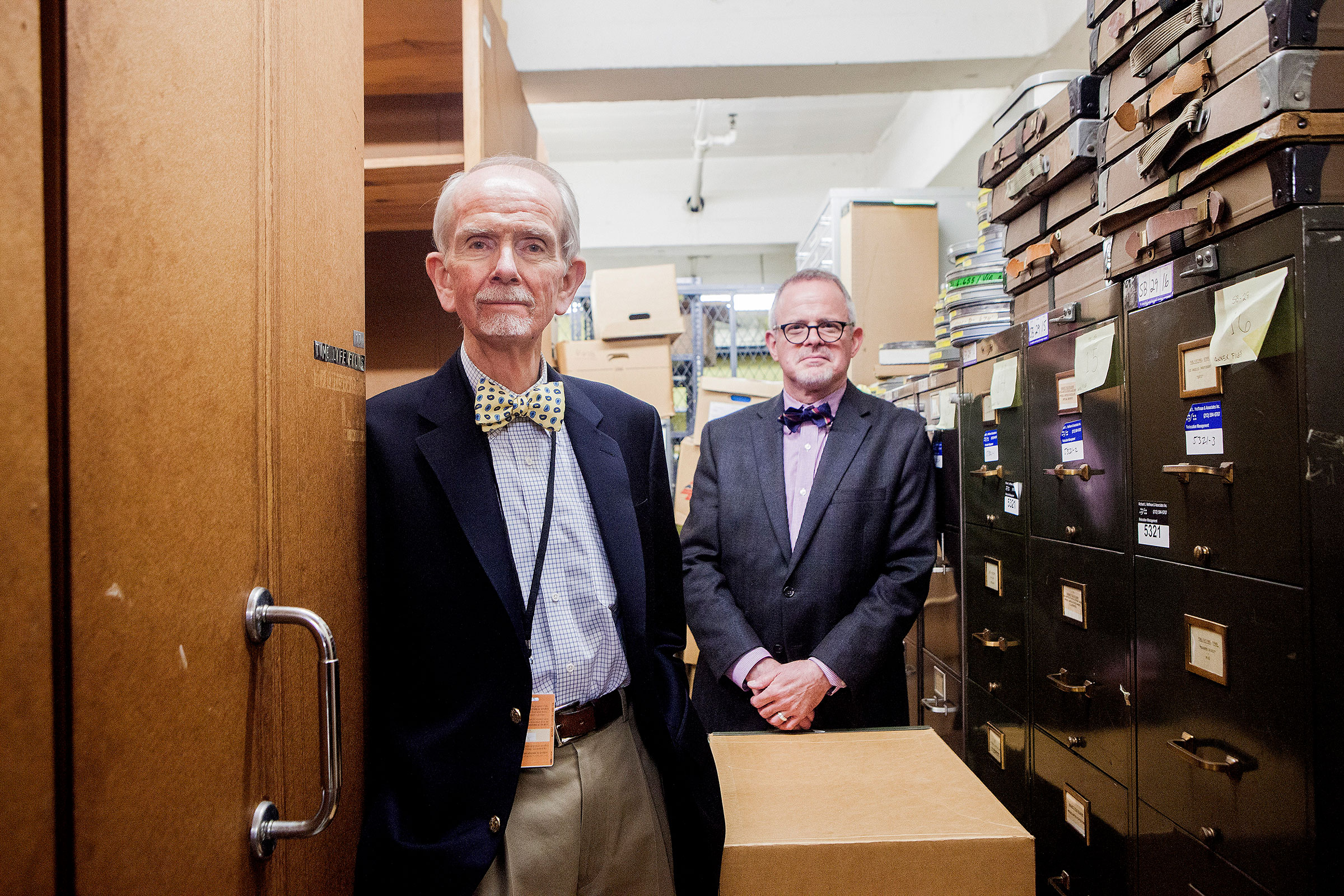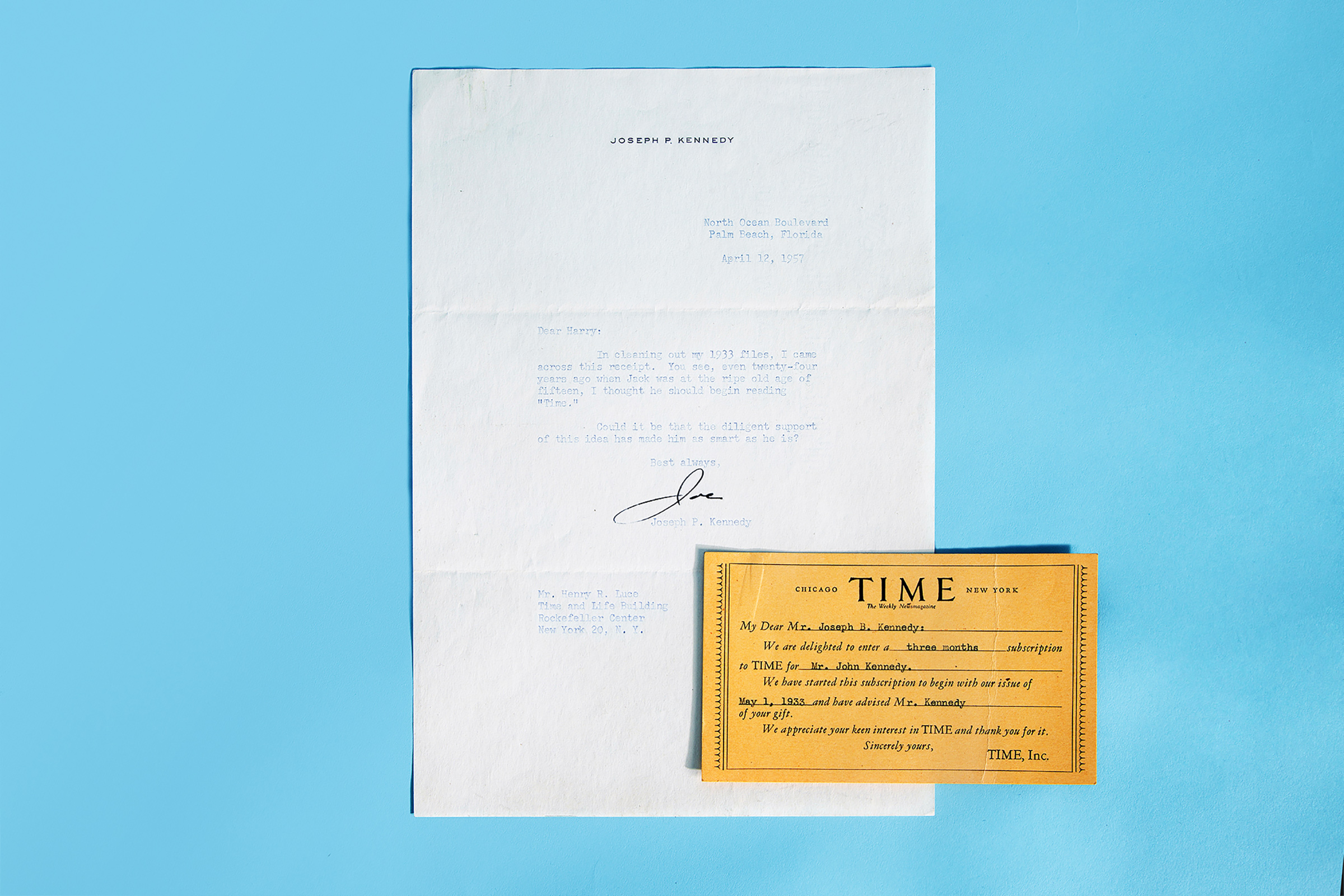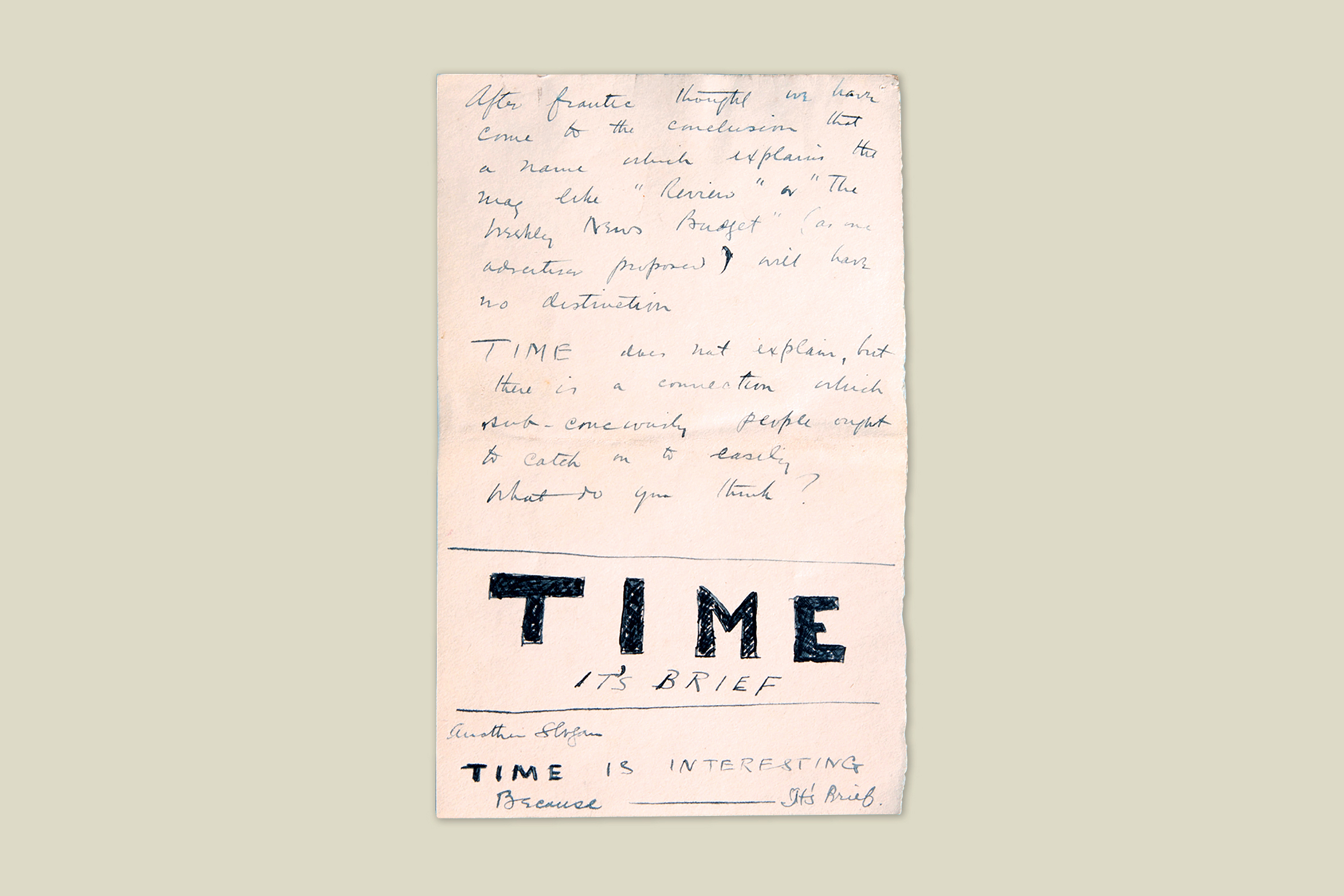When Bill Hooper started work as an archivist for Time Inc. in 1980, the company was headquartered in the Time-Life building in New York City’s Rockefeller Center complex and the artifacts that told the story of TIME’s history were housed on-site. Hooper quickly became a go-to for staffers’ questions about the history of the publication—always ready with a Henry Luce quote or an appropriate anecdote or example. The Time Inc. archives moved to the New-York Historical Society in 2015, but Hooper remains a vital resource and source of knowledge.

In the walk-up to the 100th anniversary of TIME’s first issue—dated March 3, 1923—we spoke to Hooper about the most exciting items in the archives, the colorful personalities behind the red border, and where the publication’s influence can be seen today.
Read more: 13 Amazing Artifacts From Inside the Time Inc. Archives
TIME: Henry Luce and Briton Hadden co-founded TIME, but I think it’s fair to say that Luce is better known for it. Do you think the credit for the magazine’s 1923 launch is fairly proportioned?
I think he does [get more credit], just because Brit Hadden died so young [in 1929 at age 31]. It was Luce who built the empire, but Hadden was the editorial genius.
What exactly was his editorial genius?
He was very interested in language and brevity because he thought the Literary Digest and the New York Times were just too dense and that people were too busy to sift through all of that. He wanted to come up with a magazine that would get you all the news you needed in a week and break it down by sections—Theater, U.S. News, Medicine—which was fairly unique at that time. It was about getting the information to readers in really punchy writing and the much-parodied Homeric backward-running sentences, which made it very memorable for people.

Are there any stories that stand out to you of writers or editors over the years who were real characters?
James Agee always wore the same yellow flannel shirt every day. When TIME was in the Chrysler Building, John S. Martin, who was a cousin of Hadden’s, always kept a rifle in his office and would sometimes shoot birds out the window. One time, a duck that he shot landed on the roof of an adjoining building, and he got one of the office boys to go over and retrieve it for him.
What are your favorite bits of surprising trivia about TIME you’ve learned over the years?
One is the influence that TIME has had on the English language. It coined words like mass market, Tex-Mex, nightclub, homophobia, commute, poster, racketeer, newscast, glitterati, and coffee break.
Another thing that fascinated me was there was a woman who worked for years on the TIME copy desk named Marie Menken Maas. She was an artist and avant-garde filmmaker, married to an English professor at Wagner College. They lived in a penthouse apartment on Montague Street in Brooklyn Heights, and they would have these alcohol-fueled salons every weekend, and their guests were frequently Truman Capote and Edward Albee. Albee acknowledged that Marie and her husband were the inspirations for Martha and George in Who’s Afraid of Virginia Woolf?
Read the First Issue Here in the TIME Vault
What was the office like when you first started in 1980?
It was the era of the cocktail cart on magazine closing nights. The reference librarians had to stay really late. I was a heavy smoker. I had ashtrays on my desk. There were ashtrays in the elevators. I did love the coffee cart, too.
What are some of the most prized possessions in the archive?
Documents and letters from Winston Churchill and Joseph McCarthy. Henry Luce had a long relationship with Churchill because he was an admirer, but also because he wanted to [publish] Churchill’s memoirs. McCarthy didn’t like TIME’s coverage of him, [especially a 1951] cover of him and underneath, it said “Demagogue McCarthy.” So he wrote several letters threatening to lead an advertising boycott of TIME magazine that was gonna put us out of business. But he did not succeed.

What are some of your most unexpected finds in the archives?
President John F. Kennedy’s daddy, Joseph Kennedy, was going through his files, and he found a gift subscription card [from when] he had given a subscription to JFK when he was a teenager, and thought Luce would like it. His letter to Luce was wondering if [the magazine] was one of the things that made his son so smart.
One of our correspondents during World War II ended up in Hitler’s headquarters and wrote a letter on Hitler’s stationery, at his typewriter, to the magazine. It was heavy cream-colored stationary with a heavily embossed swastika on it. It was a fascinating, ghastly artifact. But it was fascinating that [TIME] was there.
What are some of the places where you see the influence of TIME in other news coverage today?
TIME invented the newsmagazine. Newsweek was started by Thomas J.C. Martyn, TIME’s first foreign news editor. When TIME briefly re-located to Cleveland, Martin had a family, and Luce wouldn’t pay to move him, so he quit and started Newsweek [in 1933].
Brevity was something that they really focused on in the early days of TIME. It was essentially rewriting primarily New York Times articles thought to be too long and dense, and so they shortened them and punched them up. With news sites now, there’s an emphasis on the economy of language. Get the facts in here, but make your point and make it brief.
- Donald Trump Is TIME's 2024 Person of the Year
- Why We Chose Trump as Person of the Year
- Is Intermittent Fasting Good or Bad for You?
- The 100 Must-Read Books of 2024
- The 20 Best Christmas TV Episodes
- Column: If Optimism Feels Ridiculous Now, Try Hope
- The Future of Climate Action Is Trade Policy
- Merle Bombardieri Is Helping People Make the Baby Decision
